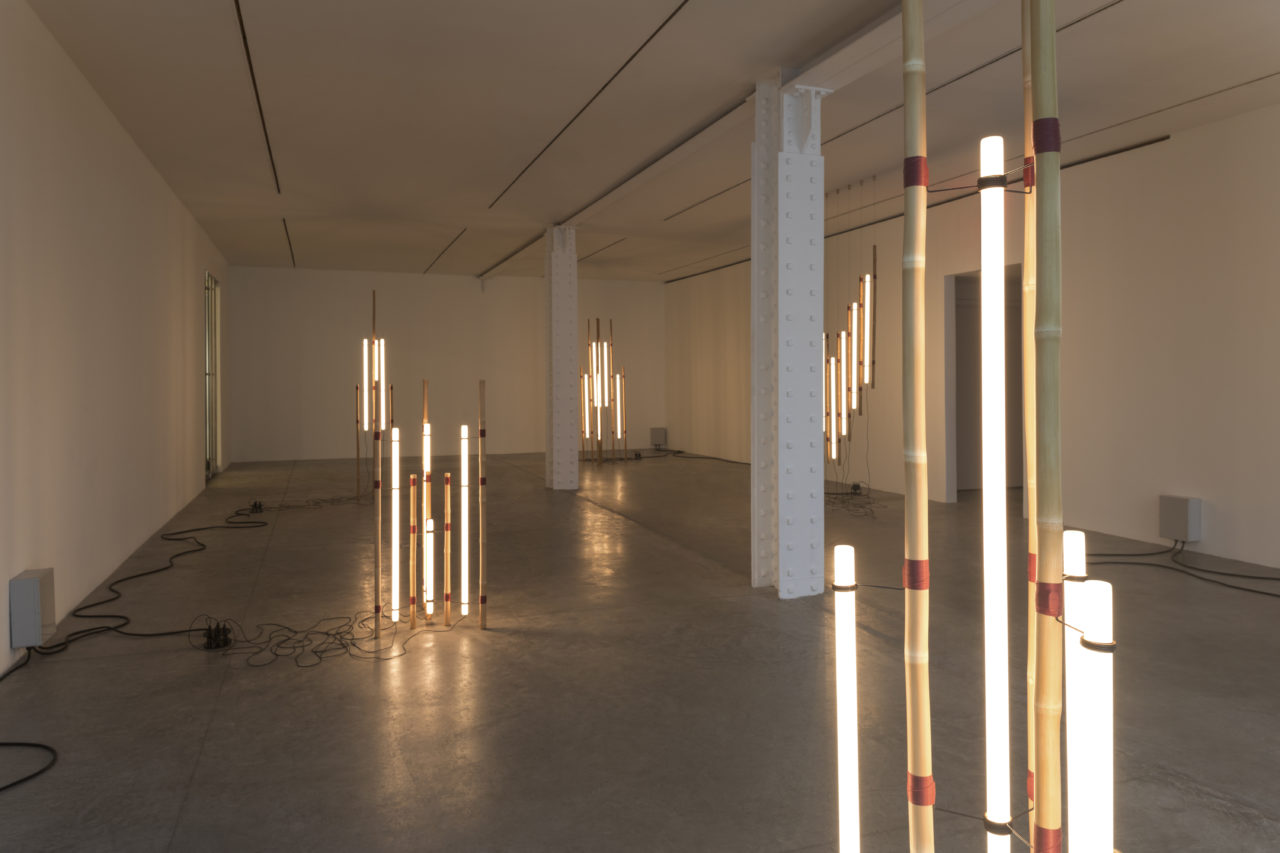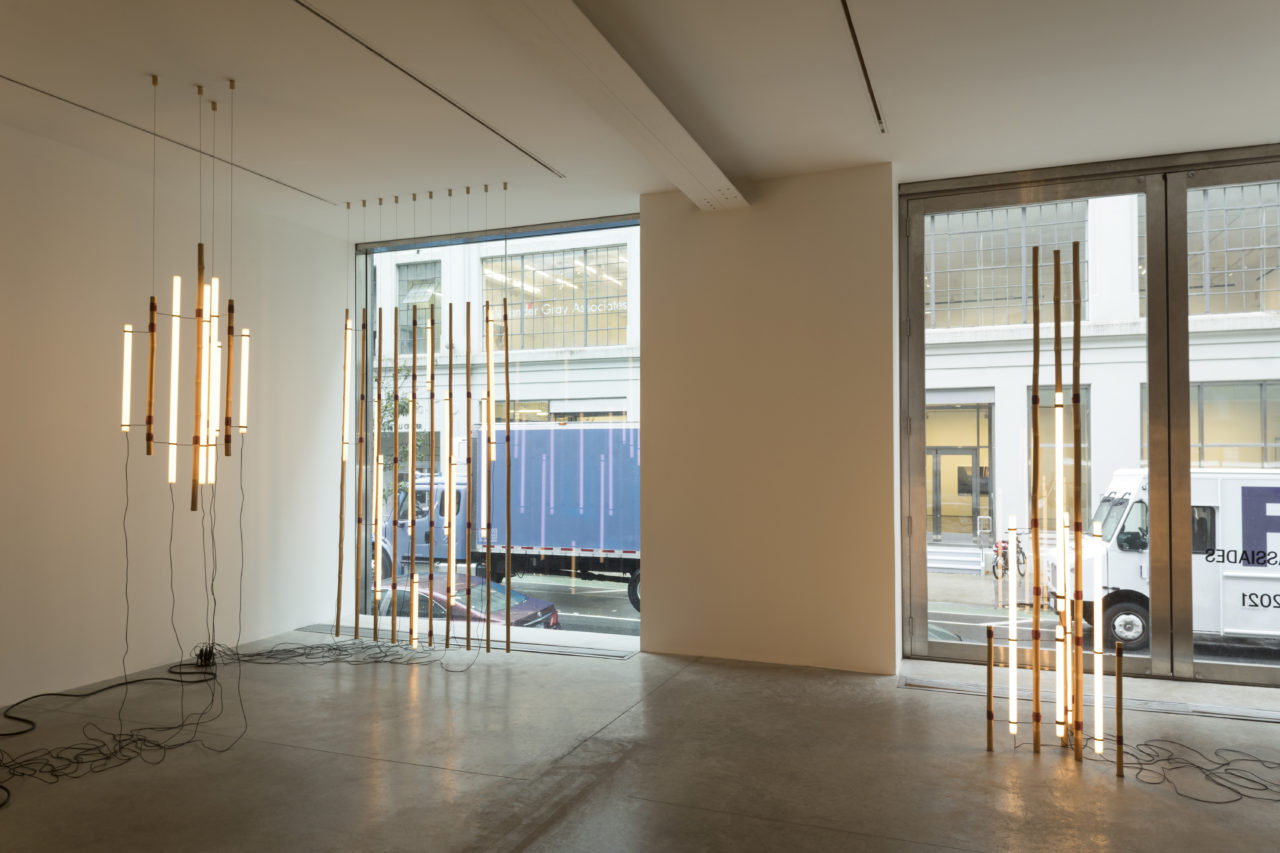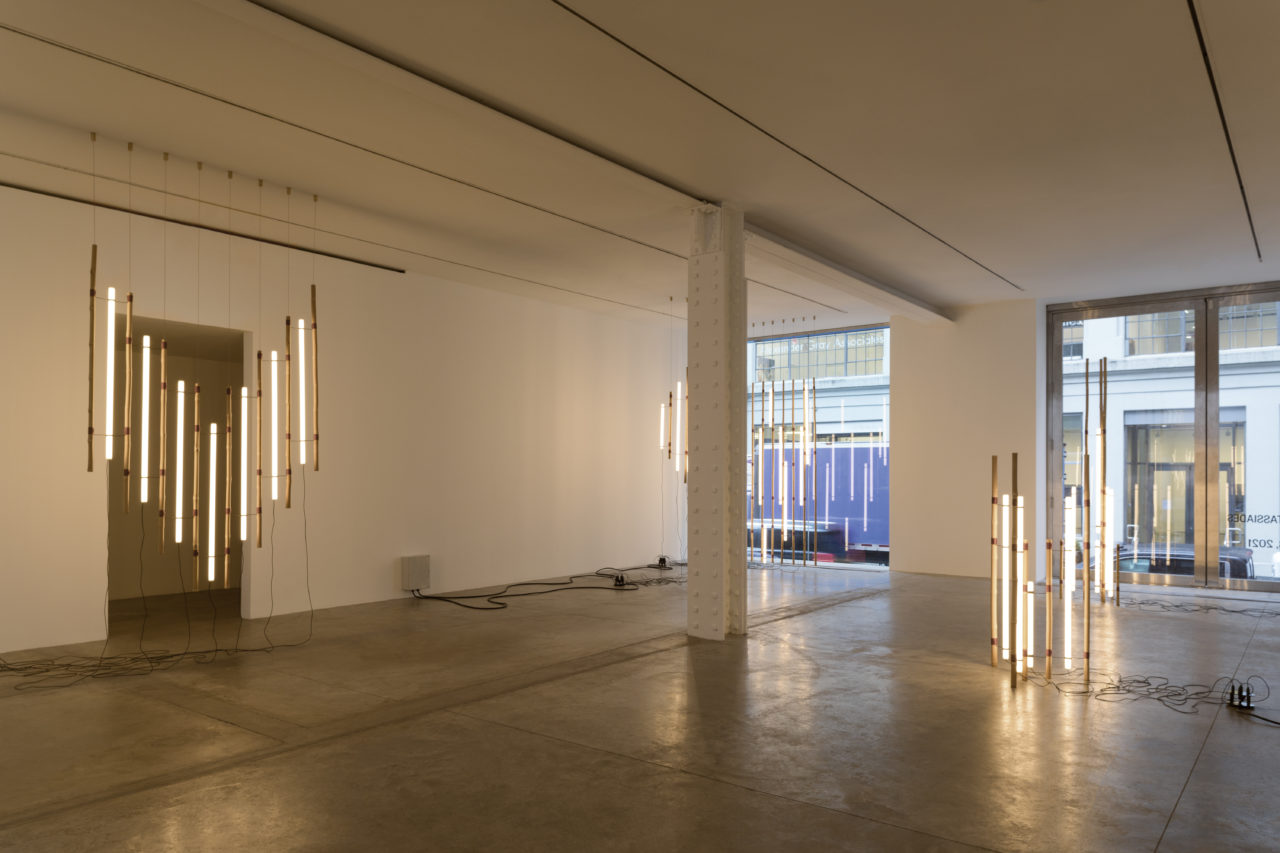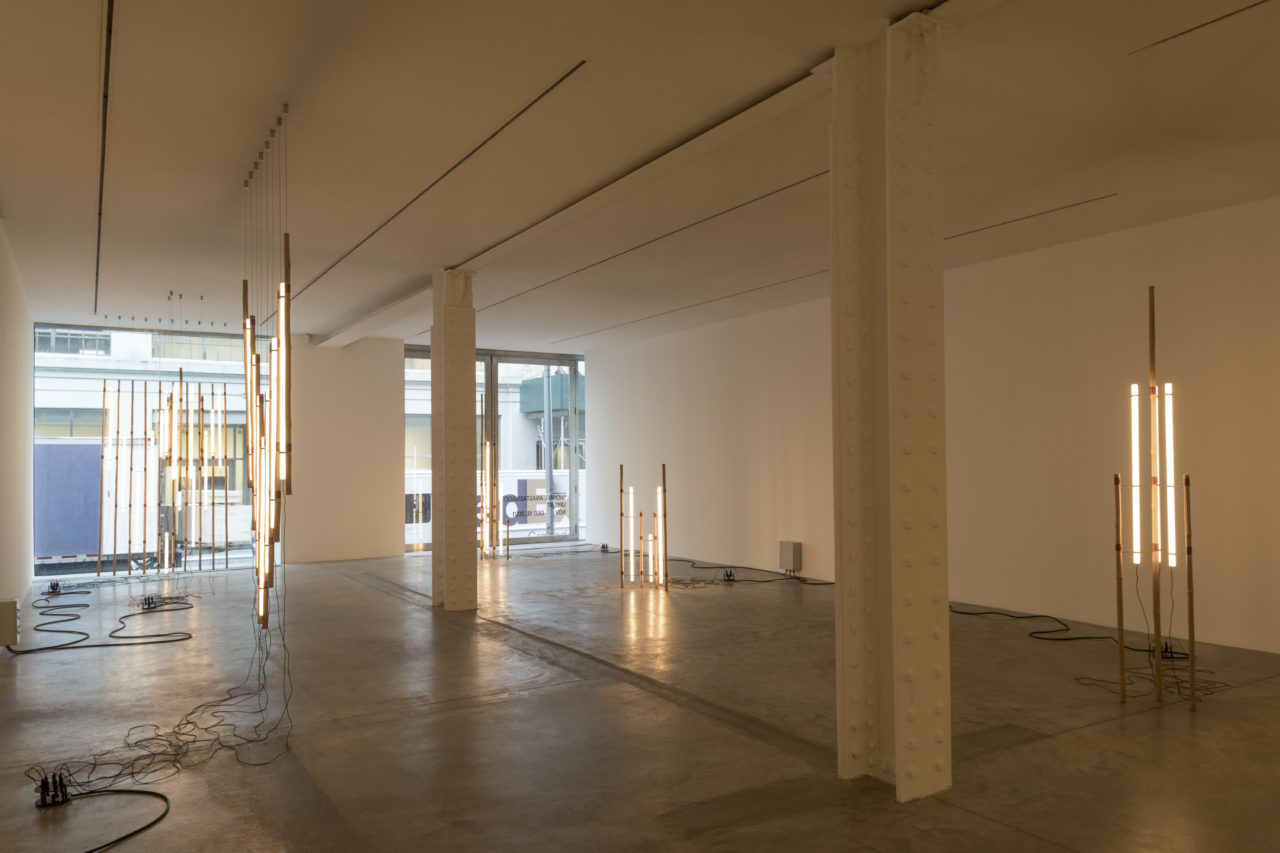London-based, Cypriot designer Michael Anastassiades has been a fixture of the design world for over two decades. His hyper-minimalist approach to everything from interiors to lighting has made him a household name. The multi-hyphenated talent’s meticulous consideration for material and assembly has allowed him to channel his reverence for modernism and nature in various mediums. Though his highly-refined and pared-back wares—monumental luminaires for Italian brand Flos for example—result from an intensively iterative process, the designer often finds himself negotiating between the erratic nature of improvisation and the stability of structure. He stands apart in his ability to masterfully translate various sources of inspiration in distilled forms and compositions.
Anastassiades’s latest endeavor—a series of ready-made lamps—marks a departure for the usually industrially-minded designer. First debuted at ICA Milan in early September, new works are on view at New York gallery Friedman Benda through December 18; his first solo show in the United States. Born out of the lockdown but not as a direct reference to the paradigm-shifting world event, the collection was entirely developed by hand using different artisanal techniques and readily available materials within the confines of his studio. AN market editor Adrian Madlener spoke to the designer just before the showcase opened.

AN Interior: What was the impetus behind this project?
Michael Anastassiades: As of December 2019, I was scheduled to do a show with Friedman Benda the following April, but as we all know, COVID-19 hit, and that all changed. The questions of why we like design and why we produce certain things were put to a fine point. The complexity of how we make things was put to the test. All of a sudden, we couldn’t go to a workshop or visit fabricators in other cities. We all had to work from home. This new reality pushed me to reconsider how I usually go about doing things. Rather than rely on industrial production, I started working with my hands and seeing what that could yield. Making maquettes or approaching a project from the outside was never really something I had done before.
How did you get started?
Knowing that I wanted to work with natural material but not yet entirely sure what I would do with it, I began by ordering bamboo and twine. Why bamboo, you might ask? Because it’s so unpredictable. I wanted to challenge myself. What I usually do is so disciplined and controlled. It became an exercise of trying to understand the material and all of its imperfections. I had to learn how to tame it. Ultimately, It was a gesture against industrial processes. The idea was to make everything by myself, by hand, without using machinery. I only used hand tools to cut the bamboo. What is impressive about this material is that it’s essentially ready-made. It only required precise cuts and minimal finishing. A big part of my process was selecting the right pieces so that they’d have the same diameter and height. This influenced my decision to create lights and incorporate borosilicate glass tubes with similar conical dimensions.
It’s interesting that even if you choose to work by hand and implement specific craft techniques, you’re still trying to problem solve and achieve a certain level of precision. How did you decide to develop a set process in creating these illuminated compositions?
I first established a methodology of combining and structuring the bamboo dowels in different arrangements by intricately wrapping the twine in a delicate yet sturdy knot and anchoring the light tubes using metal braces. Gauging the proportion was vital to ensuring the stability of each piece but also establishing an aesthetic continuity. After that, I created numerous versions with some standing and others hanging, what’s currently on view in the gallery. The structure is one thing, and the lighting source is another. The armature could very well hold candles. They could be anything. My aim with these pieces is that they remain open to interpretation. It could be a forest, a city skyline, an alphabet, or a series of rockets. Nothing is hidden. Everything is exposed. It’s quite straightforward, which is often hard to get right. These qualities are essential to me and an aspect that was central to this exploration.
Did Bruno Munari’s philosophy of easy assembly and accessibility in using readably-available materials somehow influence this approach?
MA: The suggestion is there. The pieces are so simple and clear in how they communicate that you feel you could make one: I could cut some bamboo and put something together.
AN: The idea of creating iterative works that follow a set methodology and can be understood in different ways was also central to Dan Flavin’s practice. How is his work a source of inspiration?
MA: In specific ways, yes. The references are strong. I’m a massive fan of Flavin’s work, especially his early sketches rather than the actual pieces. They serve as excellent evidence of his raw exploration of composition and form.
AN: Is this new practice something you’d like to continue with or that will inform other projects moving forward?
MA: It’s something entirely new for me. Where this leads me, I have no idea. I love the process and results, but it doesn’t necessarily counter my previous work. It’s part of my ongoing evolution. Ultimately, this was an experiment to see what I could achieve within the confines of my home and personal studio. I don’t want to say it was a reaction towards, let’s say what was happening during COVID-19 because I think that would be a facile excuse. However, it did open up new possibilities, and the circumstances were such that I could indulge in them.
AN: Do you feel that working in the collectible design sphere provides more room to experiment than working in the contract industry?
MA: I think that the shifts are marginal. I work in industrial production with my company but also for brands like Flos. I love all of it. So for me, this idea of being accessible and expressive within a gallery is no different. Because I don’t hold my expression inside me, I don’t find it frustrating that I have to design a chair that has to pass through a million tests and that has to do this or that. In my mind, these works could very easily also be production pieces. Maybe not commercial because they’re expensive to fabricate, but good usable designs nonetheless.




